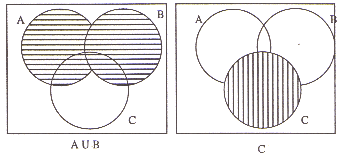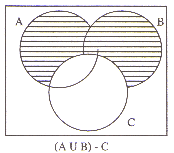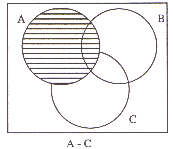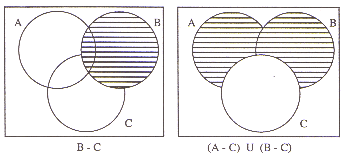| (a) | (i) What does it mean for an
argument to be valid? (ii) Determine, by constructing a truth table, whether or not the following argument is valid.
(iii) Is the following statement a tautology or a contradiction?
where we define our terms
Justify your answer.
|
[2]
[4]
[3] |
| (i) An argument is valid if the conclusion is true whenever all the premises are true.
|
||
| (ii)
|
||
| (iii) It is tautology because it is always true.
|
||
| (b) | Prove, using Venn diagrams that
for all sets A, B and C (A È B) - C º (A - C) È (B - C) You must show your working
|
[7] |

|
||
| (c) | Let S be the statement " x Î R if x(x+1) > 0 then x > 0 or x < -1(i) Write down the contapositive of S. (ii) Write down the converse of S.
|
[2] [2] |
| (i) " x Î R if -1 £ x £ 0 then x(x + 1) £ 0
|
||
| (ii) " x Î R if x > 0 or x < -1 then x(x + 1) > 0
|



